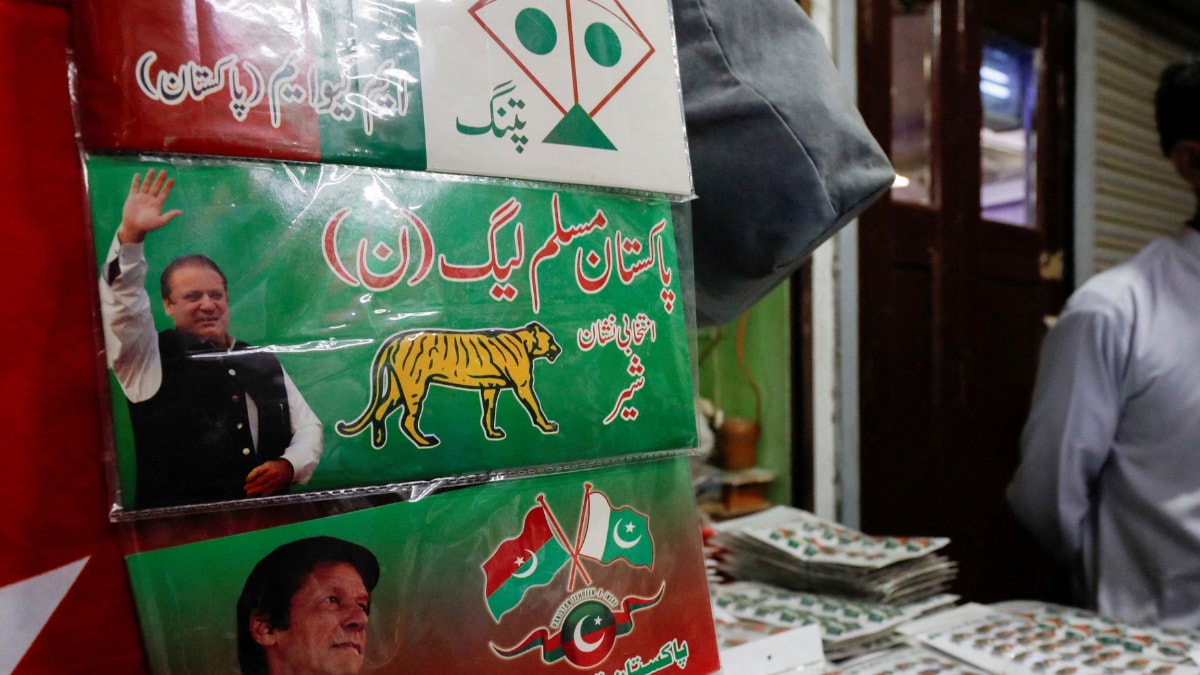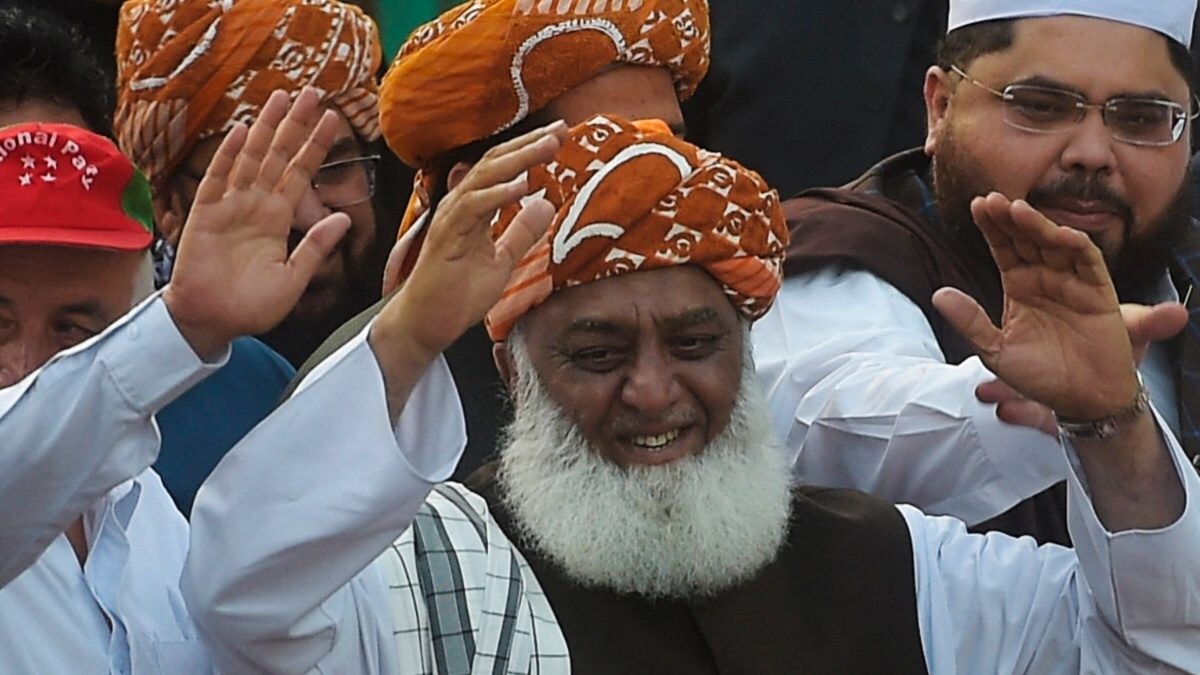[ad_1]
Pakistan has begun voting to elect its new government. But did you know that no prime minister in the history of Pakistan since 1947 has completed a full term in office? Most prime ministers were either dismissed or disqualified. The first PM, Liaquat Ali Khan, was assassinated in October 1951, and the remaining prime ministers were designated to carry out a partial term.
Pakistan Muslim League Govt and Its Fall (1947-1956)
Liaquat Ali Khan was appointed as the first prime minister of Pakistan after Independence. Khan and Muslim League faced challenges with socialists in West Pakistan and communists in East Pakistan. He tried to centralise Muslim League, but was faced with criticism on mixing religion with politics.
The death of Jinnah was announced in 1948, and a new cabinet was also re-established. Facing problems of religious minorities during 1949-50, Khan met Pandit Jawaharlal Nehru and signed the Liaquat-Nehru pact in 1950, in order to reduce tensions between the two countries. After Mohammad Ali Jinnah’s death, Khan faced differences with the Pakistan Army, who was hostile towards his diplomatic policy.
On October 16, 1951, Khan was shot twice in the chest while he was addressing a gathering of 100,000 in Rawalpindi. Khan was immediately rushed to the hospital, but he succumbed to injuries. His murderer was shot dead later.
Governor-General Khwaja Nazimuddin was appointed was the prime minister in October 1951 after Liaquat Ali Khan’s death. He was dismissed in 1953, following riots in Lahore, and his government inability to improve the economy and internal security.
Mohammad Ali Bogra was made the PM from 1953-1955. His foreign policy was on strong anti-Soviet agitation. Bogra resigned after confrontation with acting governor-general Iskander Mirza.
Chaudhari Mohammad Ali was the fourth PM of Pakistan from Muslim League, and served only for 13 months in 1955-56. During the military dictatorship of Mohammad Ayub Khan, Mohammad Ali led his Muslim League party in opposition to the regime.
First Military Coup under Mohammad Ayub Khan (1958-69)
President Iskander Mirza abrogated the constitution on October 7, 1958, and announced coup. He then declared martial law and appointed General Ayub Khan chief martial law administrator (CMLA). Ayub Khan restored civil administration, and a poll was conducted to gauge the public mood, “95% of the voters said they have “confidence” in him. Khan introduced more submarines, and filled civil administrative positions with army officers, increasing the military’s influence over the bureaucracy. He prioritised relations with the US and Europe, and did not pay much heed to Soviet Union.
The war with India in 1965 was a turning point in his presidency, and it ended in a settlement reached by Ayub Khan at Tashkent. Public resentment had been rising since the 1965 elections, with Zulfikar Ali Bhutto resigning as foreign minister and forming his Pakistan People’s Party (PPP) in 1967.
On 25 March 1969, President Ayub Khan resigned from office and invited commander-in-chief of the army General Yahya Khan to take over control of the country.
Nurul Amin was appointed Prime Minister by President General Yahya Khan on December 6, 1971. On December 20, 1971, however, his term as prime minister was cut short as Khan resigned.
PPP’s Zulfikar Ali Bhutto’s Premiership (1973-1977)
Bhutto served as president of Pakistan from 1971 to 1973, and prime minister from 1973 to 1977. He was overthrown and executed by the Pakistan military. His government, retaining the martial law, began a process of Islamisation, according to Britannica.
After winning the 1977 elections with huge mandate, Bhutto was charged with electoral fraud. His government was seized by General Mohammad Zia-ul Haq, the army chief of staff, on July 5, 1977. He was sentenced to death in March 1978 for having ordered assassination of an opposition leader, and was hanged in April 1979.
Mohammad Zia-ul-Haq Assumes Presidency
Haq seized power from Zulfikar Ali Bhutto in a bloodless coup on July 5, 1977, and became the chief martial law administrator. He imposed strict censorship on the press, banned strikes, suspended political parties and declared martial law, which was lifted around 1985. He died in a plane crash. Haq reversed many of Bhutto’s policies with the US, Japan and the West. Another major initiative by him was to militarise the atomic energy programme that was founded by Bhutto in 1972.
Benazir Bhutto as PM (1988-1990)
Bhutto was the first woman leader of a Muslim nation, and served the prime ministership twice – 1988-1990 and 1993-96. She formed a loose coalition with the independent MPs, but had to face the wrath of the military when in August 1990, she was dismissed by President Ghulam Ishaq Khan on charges of corruption. Her party, PPP, was defeated by Nawaz Sharif in October 1990 elections.
Pakistan Muslim League–Nawaz (1990-1993, 1997-98 and 2013-17)
Nawaz Sharif served as the prime minister of Pakistan for three terms. He initiated economic reforms and privatisation of businesses, but faced tension with the US, which asked him to suspend its nuclear programme.
During his second term, Sharif attempted to reduce the powers of the military and the president. He blocked the appointment of five additional judges to the Supreme Court, which led to a constitutional crisis. In late 1990s, Pakistan’s economic condition deteriorated, and neared bankruptcy in 1998. Sharif after facing conflict with General Pervez Musharraf was overthrown in a military coup.
Sharif went into exile in Saudi Arabia in 2000 in order to commute his sentence, and returned to in Pakistani in September, 2007. In December 2007, Benazir Bhutto was assassinated while campaigning in Rawalpindi, subsequently, Sharif’s PML-N won with about one-fourth of the majority while PPP’s Asif Ali Zardari securing one-third of seats.
In 2013, Sharif secured a third term, while his rival Pakistan Tehreek-e-Infsaf (PTI) Imran Khan called the elections rigged, and held protests in Islamabad. Sharif was forced to resign in 2017 after he was involved in the Panama Papers scandal. The Supreme Court voted disqualified him to hold any office in July 2017, and his brother Shehbaz Sharif was appointed to lead PML-N.
Pervez Musharraf As President (2001-2008)
Musharraf’s presidency was fraught with scandals relating to nuclear weapons. He supported the US after the September 9, 2001 attacks to weed out Taliban terrorists. He was the architect and led his country against India in 1999 Kargil War, which was his biggest military failure. He disbanded cultural policies of Sharif’s government, and adopted Benazir Bhutto’s, and banned Indian channels in Pakistan. He announced his resignation in August 2008, and left for London in November in the same year.
Rise of Imran Khan (August 2018-April 2022)
Cricketer-turned-politician Imran Khan became the first prime minister to be removed by a parliamentary vote in 2022. The anti-establishment leader ordered the reshuffling of the bureaucracy, and made the first major appointment in the Pakistan Army as General Asim Munir. He reiterated strengthening ties with Saudi Arabia despite the assassination of journalist Jamal Khashoggi. He raised the issue of US sanctions against Iran, and gave importance to prioritising ties with China.
Khan was removed after it was alleged that he leaked classified state documents. He was also charged with selling state gift illegally. He is currently in prison, and campaigning for his party, PTI, for the general elections.
In November 2022, he shot in the leg in an assassination attempt while he was addressing a public gathering in Wazirabad in Punjab.
Shehbaz Sharif as PM (2022-23)
His government faced challenges in late 2022 when Imran Khan’s PTI launches attacks on security forces in Khyber Pakhtunkhwa province. Pakistan saw its worst economic crisis during Shehbaz Sharif’s regime. He resigned from office three days early, and allowed elections to get delayed beyond October – the original set date.
[ad_2]
Source link




